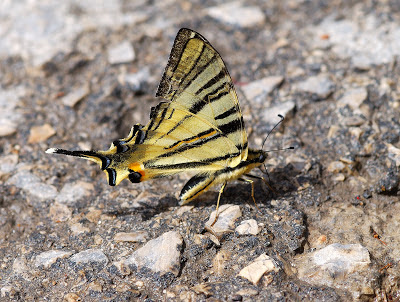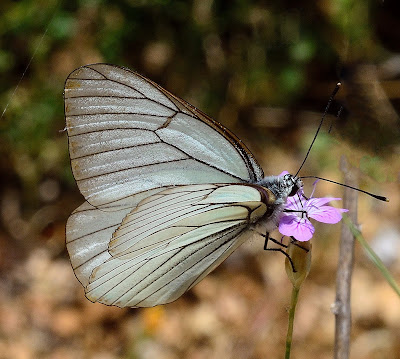The beautiful Greek Island of Lefkada is one of our favourite destinations.We last visited it two years ago at the same time of year staying just above the hillside village of Paliokatouna with spectacular views over the coastal town of Nidri,and beyond to the Geni peninsula and the offshore islands.The mountains of the Greek mainland are clearly visible in the distance.
This year we made our base on the fringes of Nidri , where yachting is the main interest due to the safe mooring waters and sailing conditions.
As my butterfly trips were so successful around Paliokatouna last time I made a point of taking the road out of Nidri towards the village some three kilometres away.The quiet road gently rises up into the hills and dusty tracks lead off at regular intervals into olive groves and wooded areas.It wasn't long before I came across several species of butterfly,the most outstanding being the Swallowtail.A fast flier I generally only see it in passing but today I was fortunate enough to see it nectaring on scabious at the roadside.A notoriously difficult butterfly to photograph due to it's constant fluttering when feeding.
 |
| Scarce Swallowtail |
As it turned out perhaps the best way to see butterflies on this very hot day was to find any wet spot along a track as they are in constant need of the moisture and salts.I was again lucky in this regard as on the same wooded track as two years ago I found again a Nettle Tree Butterfly, and amongst a recently watered flowerbed a Woodland Grayling.
One species of butterfly that in some years is abundant but others not so is the Black-veined White.I did not see more than one or two time but was happy to see one feeding on thistles at the side of the road to Paliokatouna.














